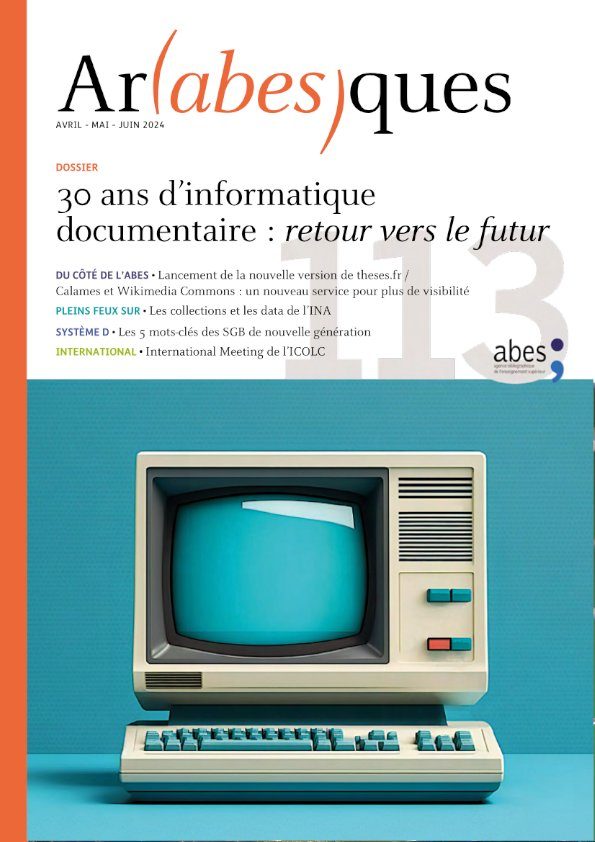30 years of document computing: back to the future
april-may-june 2024
By approving theAbes Projet d'établissement in November 2023, the Board of Directors has acknowledged the strategic importance of the document information system, which today enablesAbes to deploy a range of services considerably richer than the authors of the 1994 founding decree could have imagined, as Marianne Giloux reminds us.
Information technology now permeates all activities in the documentary sector: digitization, interoperability, web of data, APIs, triple store... The library vocabulary has de facto expanded considerably, drawing on IT disciplines, just as the profession itself has acquired an unmistakable technical coloration, as Sylvain Machefert's article shows. The inclusion of BMSs in university information systems has also left its mark on this constantly evolving environment. Today, it's impossible to work in the document sector without talking about data management, discovery tools or identifiers. At the frontier between these two worlds, the librarian remains the indispensable link between IT and research, between students and documentation tools.
This dossier shows the trajectory of this powerful evolution in three stages:
- This historical approach begins with an article by Jean Bernon, and is followed by an evocation of Henriette Davidson Avram, a little-known figure in the world of librarianship, through whom Grégory Miura explores the political and strategic construction of the sector.
- Several freeze-frames then focus on the technical impregnation of the profession in the 2020s: transformations in BMSs detailed in articles by Sophie Demange and Agnès. Manneheut, changes in the uses of OPACs evoked by François Renaville, and the evolution of professions, in a text co-authored by Aurore Cartier and Corinne Maubernard.
- The future of documentary computing is not left out, with two focus articles to round off this issue, one of which, in keeping with current events, outlines the reinformatization ofAbes , written by Stéphane Gully and Jean-Marie Feurtet. Mathilde Garnier, for her part, plays the game of imagining the catalog of 2054, marked by the entry of AI into our world. The floor is also given to BMS user clubs, which have become key players in the field.
To all those who mistakenly believe that the library world, often accused of conservatism, is struggling to get out of the rut of reporting, may this dossier testify, on the contrary, to its great capacity for adaptation and the profound changes it has had to face, with success.
Laure Jestaz
Deputy director of theAbes

